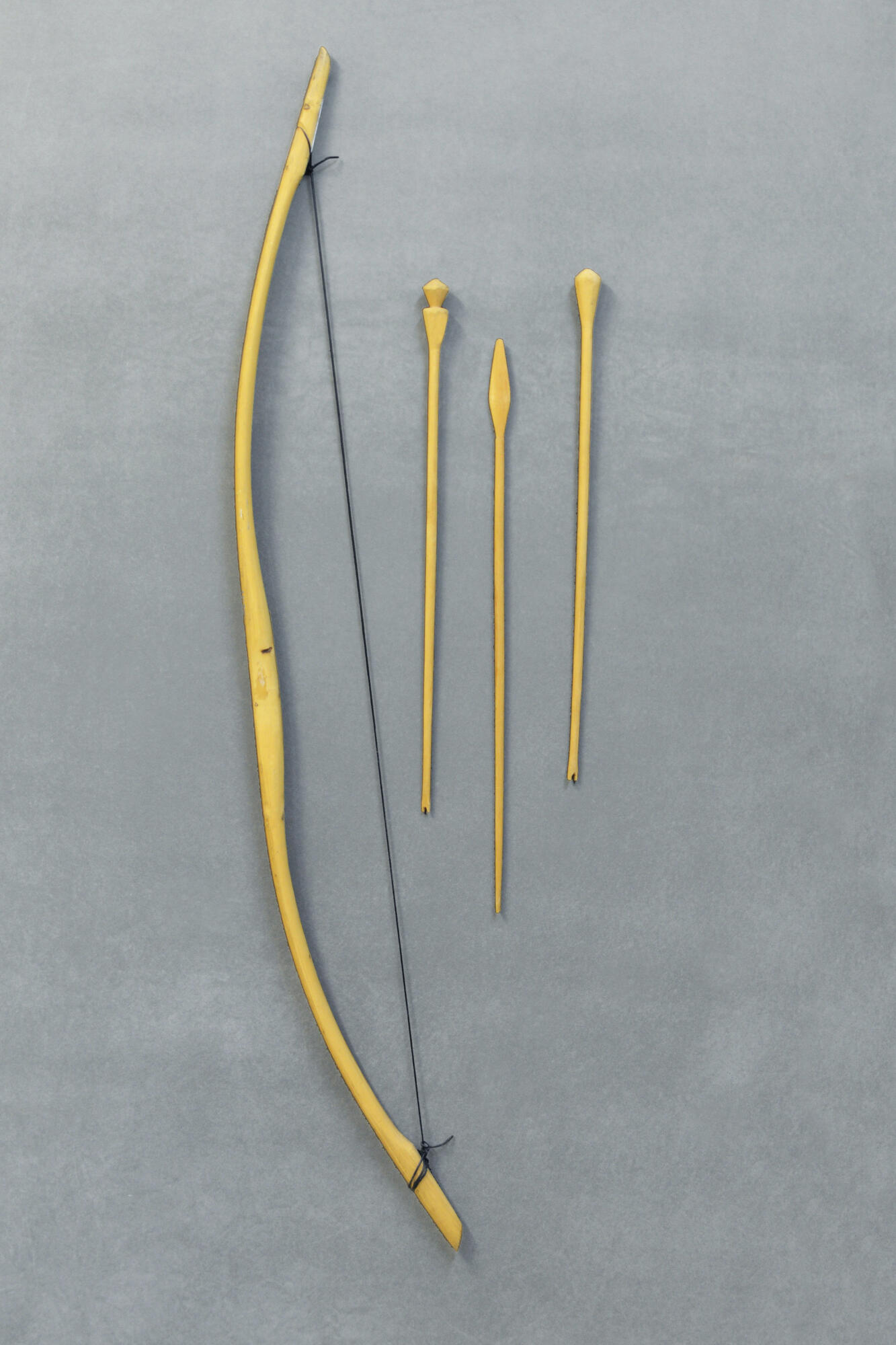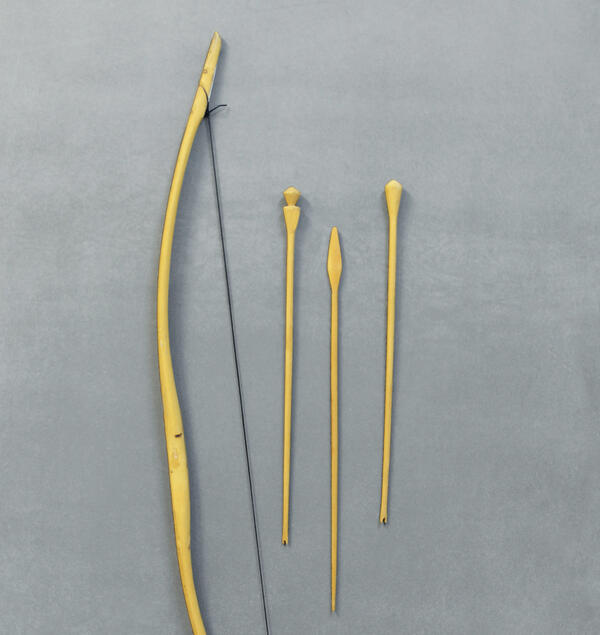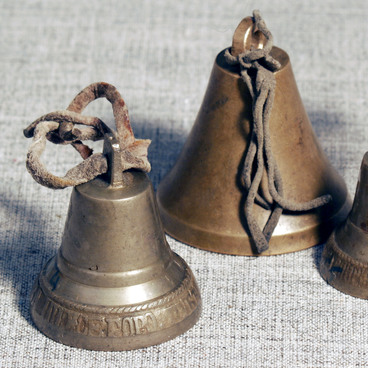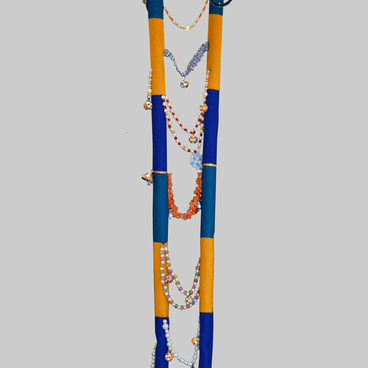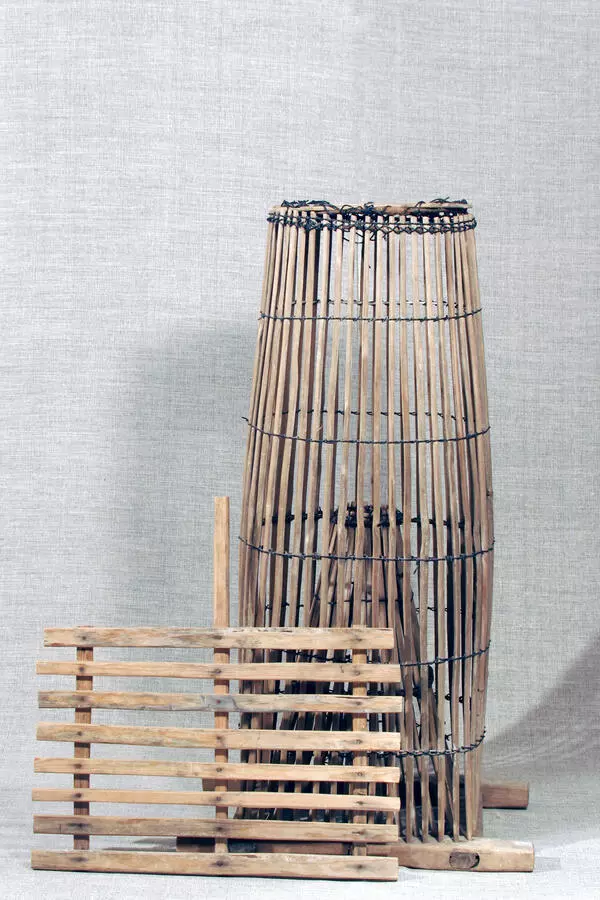Like for any other business, the Nenets have a special ecological calendar for hunting. Its year is not equal to a traditional year but it is divided in two — the first half-year is winter, the second one is summer. In a winter year, they hunt for squirrel, sables, hares, otters, ermines, foxes and polar foxes, wolverines, bears, wild reindeer. Men ski to the taiga, and when they go for a long trip, they ride reindeer. In summer, water and forest birds are hunted.
Handmade bows and arrows, traps and knives used to be the main hunting tools by the Forest NEnets up to the end of 19th — beginning of 20th century. As guns became more accessible, primitive weapons were used less often. But children and juveniles still hunt small fur animals and birds with bows and arrows. The Forest Nenets children get practical hunting skills while playing, imitating adult-hunters from an early age. By seven, boys can already bag by themselves.
Usually two types of trees are used to make a hunting bow — conifer and deciduous trees. The string is made of twisted thick reindeer tendons, because they are very strong. Arrowheads of different forms are made of wood, bone or metal. When hunting birds, they use arrows with two-pronged heads, for big animals go arrows with faceted heads and for squirrels and other small game go blunt-headed arrows.
A boy’s first bow is handmade by his father of flexible willow twigs, often with a simple line as a bow-string. Toy arrows are lighter and shorter than the real hunting ones, but a boy is still able to shoot a target with them. At the age of six or seven, a boy can easily handle a knife and make a bow and arrows by himself. As a child grows up, his bow is several times modified and upgraded, turning into a real weapon gradually. By ten, a boy’s bow is the same as of an adult, only smaller.
The museum exposition displays a bow with arrows made by Rasha Ayvasedo, a Chaselka camp resident.
Handmade bows and arrows, traps and knives used to be the main hunting tools by the Forest NEnets up to the end of 19th — beginning of 20th century. As guns became more accessible, primitive weapons were used less often. But children and juveniles still hunt small fur animals and birds with bows and arrows. The Forest Nenets children get practical hunting skills while playing, imitating adult-hunters from an early age. By seven, boys can already bag by themselves.
Usually two types of trees are used to make a hunting bow — conifer and deciduous trees. The string is made of twisted thick reindeer tendons, because they are very strong. Arrowheads of different forms are made of wood, bone or metal. When hunting birds, they use arrows with two-pronged heads, for big animals go arrows with faceted heads and for squirrels and other small game go blunt-headed arrows.
A boy’s first bow is handmade by his father of flexible willow twigs, often with a simple line as a bow-string. Toy arrows are lighter and shorter than the real hunting ones, but a boy is still able to shoot a target with them. At the age of six or seven, a boy can easily handle a knife and make a bow and arrows by himself. As a child grows up, his bow is several times modified and upgraded, turning into a real weapon gradually. By ten, a boy’s bow is the same as of an adult, only smaller.
The museum exposition displays a bow with arrows made by Rasha Ayvasedo, a Chaselka camp resident.
